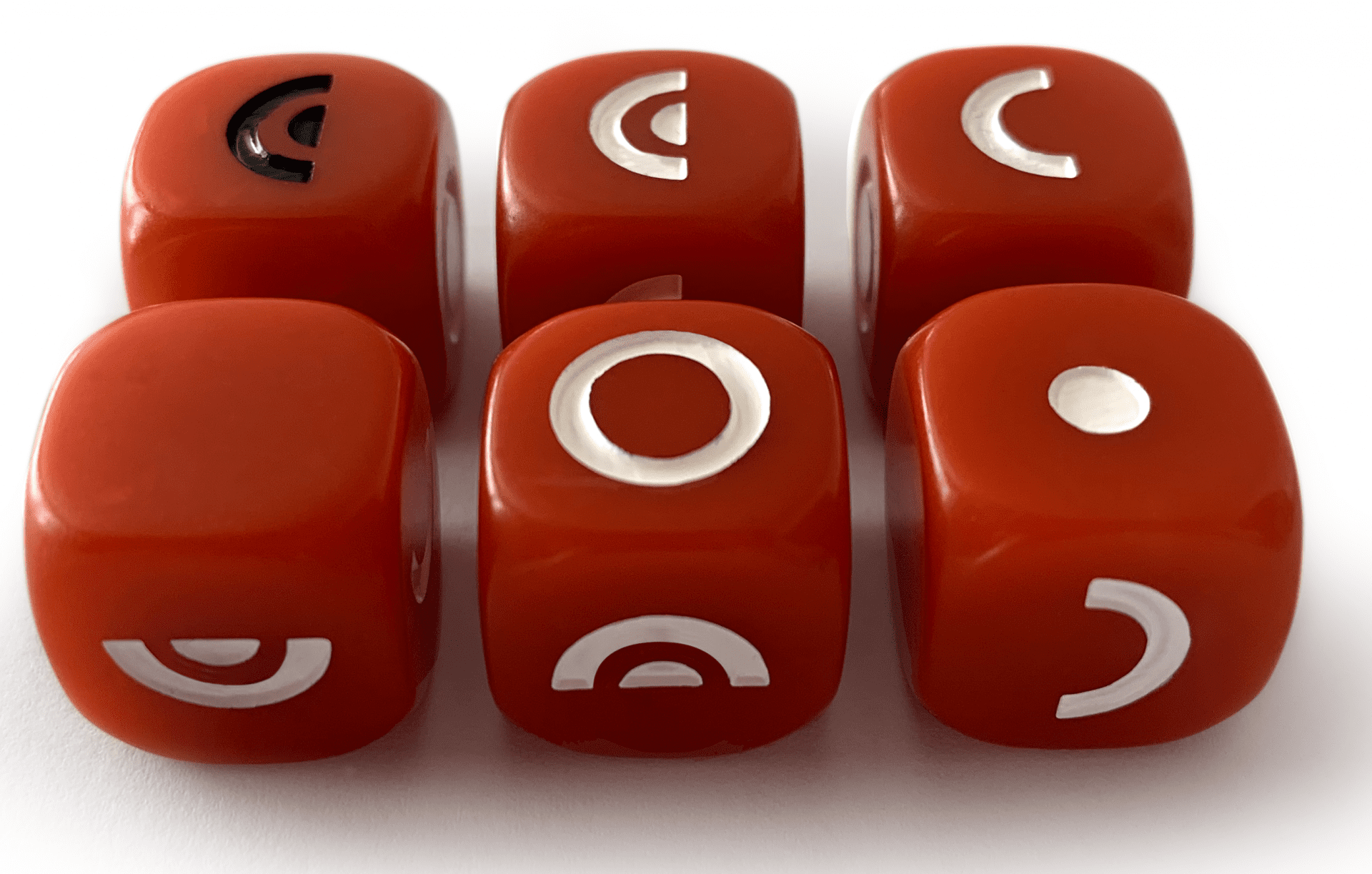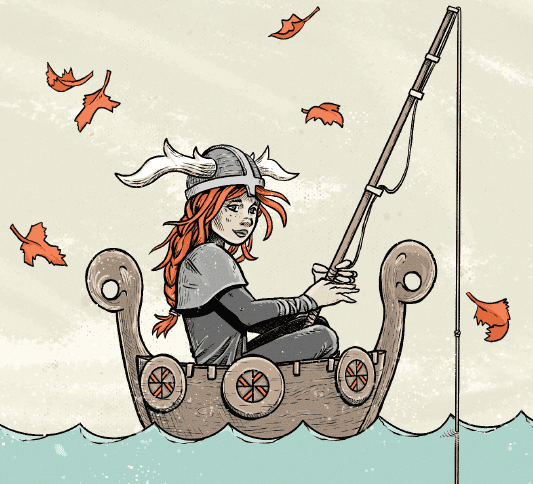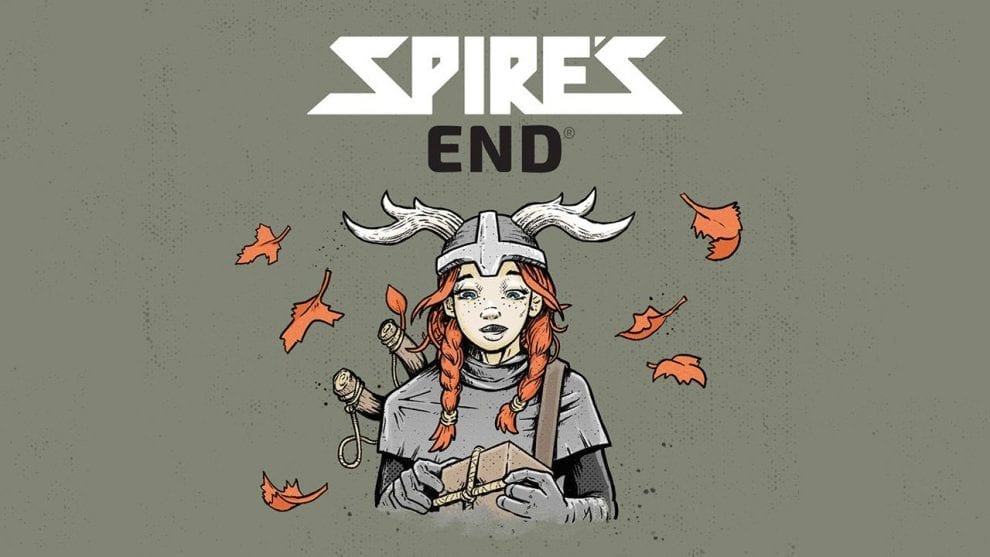Disclosure: Meeple Mountain received a free copy of this product in exchange for an honest, unbiased review. This review is not intended to be an endorsement.
A few years ago, I had the pleasure of reviewing Spire’s End by designer Greg Favro. At the time, I was impressed by the sleekness of the game’s design: not just its accessible card-driven narrative and effective combat system but the bold art direction that helped it stand out from the crowd. Spire’s End had a style all its own.
That sense of style is still on display in Spire’s End: Hildegard, the newest offering from Favro. The scope, however, is drastically different. In Spire’s End the player took control of several characters (including Hildegard) over the course of play, swapping them out as needed when the brutal grind of combat overwhelmed them. Hildegard features only the title character. Spire’s End was a gory, macabre dungeon-crawler with a tightly focused setting. Hildegard roams through town and country on her adventures, even stopping to fish when the opportunity arises. Technically, this is a prequel, yet players who have never delved into the Spire should have no problem following the stand-alone story. Moreover, it’s mechanically and artistically distinct enough that it can appeal to newcomers as well as old hands.
The Slings and Dice of Outrageous Fortune
Much like Spire’s End, Hildegard packs the joy of a solo-only “choose your own adventure”-style game into a single deck of cards. Each card is numbered and many of them feature prompts or choices that lead players to other cards, charting a unique path through the deck with every playthrough. The branching storyline feels more ambitious here; this isn’t merely picking between two monster-filled corridors but between broadly varied encounters. The effects of success and failure, as well as personal choices made during play, can shape each game of Hildegard drastically. There are some clear nodes which every player must pass through — many of them, in the first chapter at least, serving as tutorial-type events — yet there’s an even stronger allure in Hildegard to the events unseen.
Those early events are important, though, for getting players up to speed on Hildegard’s major innovation: the dice. Hildegard’s primary weapon/tool is a slingshot, so the game comes with a set of custom 6-sided dice called Shot Dice which are used for both combat and more mundane conflict resolution. Each face (save the 1 blank side) shows a different piece or combination of pieces of a classic bullseye symbol. The player will roll the dice and try to form Bullseyes. For example, if one face shows the central dot and another shows the outer circle, the player can put them together to make a complete Bullseye: that’s a success!

It’s rarely that simple, of course. Most tests require players to gather multiple Bullseyes over the course of several Sets of rolls. A single Set consists of a primary roll with a defined number of available rerolls (called Finesse). Whenever a player Finesses their dice, they may pick up any number of remaining dice and reroll them. However, the cost of doing so is that they must lock in at least 1 die each time.
Once a player stops rolling for a Set — either because they hit the Finesse limit for the task or because they chose to stop early — they have to roll a Wild Die. This last stroke of luck can change, add, or remove a die from the Set. Finally, the player looks at all their dice and sorts out the number of Bullseyes achieved to see if they’ve completed the test. If not, they’ll proceed to the next Set, keeping a running total until they hit the target number (success!) or run out of Sets without succeeding (defeat!).
Each challenge will vary the number of Bullseyes needed, the number of dice available to roll per Set, the number of Sets and the amount of times dice can be Finessed, and even which symbols can be used. This adds quite a bit of variety to the tests throughout the game. Some even feature bonus goals, achieved if the player hits a certain threshold of success beyond the baseline, that can provide players with extra rewards.
When things get really hairy the player is forced to move to a Face-Off, a special type of test reserved for more dire combat situations (similar to boss fights in a video game). These work mostly the same as regular tests, though the player only rolls a single Set. Once they’ve completed their Set the enemy gets to go following the same basic rules as the player. The player will roll dice for the enemy and assign them in a set order to the Bullseye (health) meter on Hildegard. Each numbered step of the meter requires a specific die face and can’t be skipped. Some steps also apply a status effect to Hildegard when filled. During Hildegard’s turn the player can spend an unused die to Block the next step of the meter, slowing down the enemy’s progress as the Blocked step requires a second copy of that symbol. Even taking Blocking into account, Face-Offs escalate surprisingly quickly. Damage doesn’t clear between turns so an unlucky string of enemy rolls can leave Hildegard too battered and bruised to continue. Should her Bullseye meter get filled, Hildegard will likely be forced to abandon her adventure — or worse.
The Happy Wanderer
Luckily such Face-Offs are rare. Where Spire’s End revelled in its over-the-top grimness, the world of Hildegard is gentler, brighter. The art is crisp, with autumnal hues that feel more melancholy than murderous. There are still plenty of strange creatures (and even stranger humans) yet Hildegard is more often stopping a foe from fleeing than fighting to the death.

The switch from tarot-sized cards to poker-sized makes it feel a little cozier. Events are less dire, less urgent. There’s more emphasis on narrative — it isn’t exactly plot-driven, but the moment-to-moment decisions line up more closely with a classic RPG story structure than its predecessor. Whether that story builds up to a grand finale is unclear; I was only able to play through the first Chapter as a demo. At the very least I found myself more engaged with Hildegard as a single character, pausing occasionally to debate between two equally enticing options and wondering what my Hildegard might do in this situation.
I’m normally not a fan of custom dice because they so rarely add much more to the game than a standard d6 would. A slight change to probability, such as having 2 instances of a face, doesn’t really merit the extra price that many publishers ask. Worse, some dice are too gimmicky: they might be hard to read, unbalanced, useless outside of the specific game, etc. In this case, I think the custom dice are absolutely great. They’re nicely thematic and the way that the symbols are combined visually to mark progress provides a real sense of satisfaction. Because each test limits certain combinations of symbols and mixes up the number of Sets/Finesses, probabilities can shift drastically in a way that makes the dice matter. The Face-Offs push the system to the next level, adding a hefty dose of danger without a lot of rules overhead. While I could live without the Wild Die — I found it rarely relevant and occasionally very swingy — the overall structure works for me.
When I first played Spire’s End, I was thrilled by how accessible, engaging, and stylish it was. Hildegard improves on Spire’s End in almost every possible way. A fuller story and a stronger conflict mechanic makes Hildegard feel less like a prequel and more like an evolution.
Check out Hildegard on Kickstarter today!











Add Comment